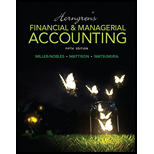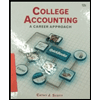
Concept explainers
Journalizing transactions, posting
Trevor Moore opened a law office on April1, 2017. During the first month of operations, the business completed the following transactions:
Apr. 1 Moore contributed $76,000 cash to the business, Trevor Moore. Attorney. The business issued common stock to Moore.
3 Purchased office supplies, $400, and furniture, $2,200, on account.
4 Performed legal services for a client and received $900 cash.
7 Purchased a building with a market value of $120,000, and land with a market value of $29,000. The business paid $45,000 cash and signed a note payable to the bank for the remaining amount.
| 11 | Prepared legal documents for a client on account, $800. |
| 15 | Paid assistant’s semimonthly salary, $1,230. |
| 16 | Paid for the office supplies purchased on April 3 on account. |
| 18 | Received $2,800 cash for helping a client sell real estate. |
| 19 | Defended a client in court and billed the client for $1,500. |
| 25 | Received a bill for utilities, $650. The bill will be paid next month. |
| 28 | Received cash on account, $1,700. |
| 29 | Paid $4,800 cash for a 12-month insurance policy starting on May 1. |
| 29 | Paid assistant’s semimonthly salary, $1,230. |
| 30 | Paid monthly rent expense, $1,100. |
| 30 | Paid cash dividends of $2,000. |
Requirements
1. Record each transaction in the journal, using the following account titles: Cash ;
2. Open the following four-column accounts including account numbers: Cash, 101; Accounts Receivable, 111; Office Supplies, 121; Prepaid Insurance, 131; Furniture, 141; Building, 151; Land, 161; Accounts Payable, 201; Utilities Payable, 211;
Notes Payable, 221; Common Stock, 301; Dividends, 311; Service Revenue, 411; Salaries Expense, 511; Rent Expense, 521; and Utilities Expense, 531.
3. Post the journal entries to four-column accounts in the ledger, using dares, account numbers, journal references, and posting references. Assume the journal entries were recorded on page 1 of the journal.
4. Prepare the trial balance of Trevor Moore, Attorney, at April 30, 2017.
Want to see the full answer?
Check out a sample textbook solution
Chapter 2 Solutions
Horngren's Financial & Managerial Accounting Plus Mylab Accounting With Pearson Etext -- Access Card Package (5th Edition) (miller-nobles Et Al., The Horngren Accounting Series)
- How much was the company's ending inventory?arrow_forwardJordan's Bakery has a monthly target operating income of $8,000. Variable expenses are 45% of sales, and monthly fixed expenses are $5,500. What is Jordan's operating leverage factor at the target level of operating income?arrow_forwardWhat is net income for the year on these financial accounting question?arrow_forward
- Principles of Accounting Volume 1AccountingISBN:9781947172685Author:OpenStaxPublisher:OpenStax College
 College Accounting (Book Only): A Career ApproachAccountingISBN:9781305084087Author:Cathy J. ScottPublisher:Cengage Learning
College Accounting (Book Only): A Career ApproachAccountingISBN:9781305084087Author:Cathy J. ScottPublisher:Cengage Learning Financial AccountingAccountingISBN:9781305088436Author:Carl Warren, Jim Reeve, Jonathan DuchacPublisher:Cengage Learning
Financial AccountingAccountingISBN:9781305088436Author:Carl Warren, Jim Reeve, Jonathan DuchacPublisher:Cengage Learning  College Accounting (Book Only): A Career ApproachAccountingISBN:9781337280570Author:Scott, Cathy J.Publisher:South-Western College Pub
College Accounting (Book Only): A Career ApproachAccountingISBN:9781337280570Author:Scott, Cathy J.Publisher:South-Western College Pub Financial AccountingAccountingISBN:9781337272124Author:Carl Warren, James M. Reeve, Jonathan DuchacPublisher:Cengage Learning
Financial AccountingAccountingISBN:9781337272124Author:Carl Warren, James M. Reeve, Jonathan DuchacPublisher:Cengage Learning Financial And Managerial AccountingAccountingISBN:9781337902663Author:WARREN, Carl S.Publisher:Cengage Learning,
Financial And Managerial AccountingAccountingISBN:9781337902663Author:WARREN, Carl S.Publisher:Cengage Learning,





